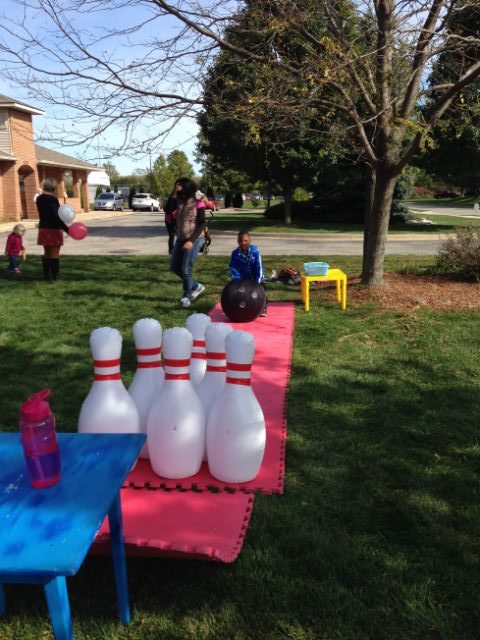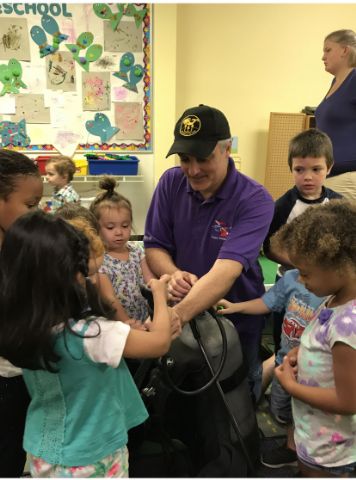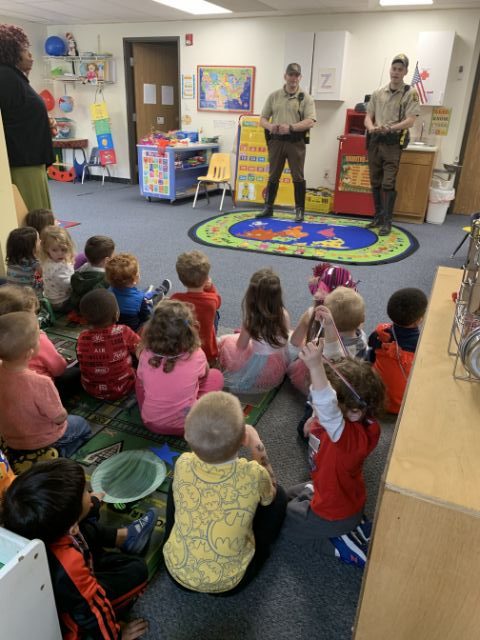Preschool (Ages 4 to 5 years)
Preschool children are guided positively to explore and achieve self-reasoning in their actions. Gaining critical thinking skills while experiencing the world around them. Expansion of verbal communication skills develop along with reading and writing skills. Children are given opportunities of exploration with a vast array of educational materials in a safe, guided atmosphere.
Emotional Development
- Dress and undress self with assistance in some areas, such as tying, snapping, and buttoning
- Care for own possessions and those belonging to the group most of the time
- Place some toys, materials, etc, in their proper places without constant reminders
- Learn and accept new routines and changes
- Deal with emotions in a developmentally appropriate way, most of the time
- Respond to redirection from staff in a constructive way, most of the time
Social Development & Living
- Understand and participate as a cooperative member of a small group, most of the time
- Share toys and equipment, most of the time
- Make the choice between working alone and in groups and be able to do both at different times
- Cooperate in some group activities and projects
Categorize people, places, events, and objects in terms of whether they belong at childcare or home - Identify various kinds of transportation
- Understand and participate in the celebration of some national holidays
Physical Development
Gross Motor
- Perform motor skills including sliding, leaping, stopping, and running
- Walk a balance beam
- Catch a small ball (e.g. softball, tennis all, etc.)
- Perform physical fitness exercises such as bending, stretching, reaching, relaxing and breathing, etc.
- Talk about why exercise is important and helps us grow (e.g. muscles, bones, etc.)
- Use large muscle equipment (e.g. tricycle, slides, etc.)
Fine Motor
- Use scissors and cut simple patterns
- Use small paintbrushes and narrow line markers
- Glue or paste small objects in simple patterns
- Copy a triangle
- Assemble an 8-11 piece puzzle
Cognitive Development
Concept Development
- Recognize basic colors; red, blue, yellow, green, orange, purple, white, brown, and black
- Identify similarities and differences of common objects on the basis of color
- In addition to identifying a circle, square and triangle, identify a rectangle
- Determine relative size of three objects in terms of big, bigger, biggest, and small, smaller, smallest
- Identify similarities and differences of common objects according to their size and shape (e.g. tall/short tree, big/little dog, et.)
- Develop an awareness of our five senses
- Follow a sequence of at least three directions
Verbal and Written Language
- Recognize and say personal information such as home address and telephone number
- Give simple directions
- Make up a story
- Tell a version of a familiar story (e.g. the Three Bears, etc.)
- Speak in complete sentences
- Follow simple instructions
- Ask for help when needed
- Incorporate new words learned into everyday vocabulary (e.g. from curriculum and daily living, etc.)
- Name basic objects and ideas that are important to daily routine (e.g. bathroom, front door, etc.)
Reading Readiness & Literature
- Name some letters of the alphabet (e.g. upper and lower case)
- Recognize some sign words in environment (e.g. stop, exit, etc.)
- Listen and enjoy being read to
- Answer basic content questions about stories a child has heard
- Relate the endings of familiar stories (e.g. Peter Rabbit, etc.)
- Name and tell about characters in stories
- Recite one or two simple poems or rhymes
- Relate basic cause and effect from a story child has heard



